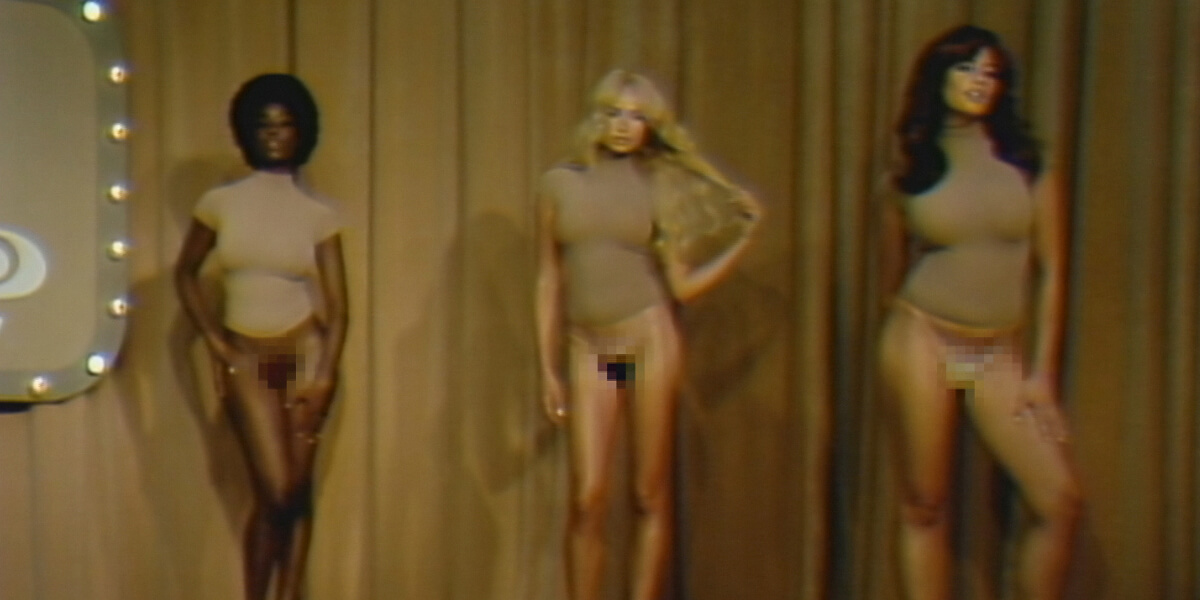Why is pubic hair still controversial?
According to the internet, “the bush” has made a comeback this year. Skims released a new line of thongs with fake pubic hair. The micro-thong, which comes in 12 different hair colors and in straight or curly texture, was sold out within minutes. The brand is known for launching headline-worthy, provocative pieces, such as its “seamless sculpt face wrap” and nipple bra. And the thong feels more like a marketing stunt disguised as empowerment. The online reactions were predictably divided; some found it shocking, some deeming it a sign of progress and empowerment, and others seeing it as mocking or even disgusting. Clearly, the discussion around pubic hair isn’t over, or more specifically, women’s pubic hair, because let’s be honest, no one is debating how men should trim their pubic hair.
So, why is pubic hair still a debate? And why does the sight of a bush (whatever the shape or texture) on a woman still feel provocative to many? Women have had strained relationships with their body hair for centuries, and somehow, it’s still being treated more like a public vote instead of a personal choice.
Most women have been socialized from a young age that hair anywhere other than on their head is something to be controlled, managed, hidden, or entirely removed.
I remember being thirteen and secretly reading Bravo Magazine in the waiting room of my dentist’s office. I would immediately flip to the pages with the naked bodies. The young women looked positively mole-like, not a single hair. The guys, on the other hand, usually sported a full bush. Even in teen magazines, the default for vulvas was hairless. The message was clear: to be desired, you must be smooth.
Historically, pubic hair has never been neutral for women. In ancient Greece, total removal was considered a cleanliness ritual and also associated with femininity. In the Middle Ages, the absence of pubic hair was seen as a sign of disease (lice or syphilis), which led to the development of the merkin (a pubic wig) to fake health. In the 70s and 80s, body hair was reclaimed as a symbol of empowerment and feminism. And then the early 2000s arrived with the mass availability of porn, ultra low-rise jeans, and widely accessible laser removal. The pendulum swung back to “baby seal smooth.”
But pubic hair does actually serve a biological purpose. It protects against bacteria and pathogens, prevents friction and skin irritation, regulates heat, and even retains pheromones. Yes, the scent-based hormones influence attraction and compatibility.
Of course, there are many reasons women remove their pubic hair beyond health or external pressure—many women named very valid reasons, such as increased pleasure and sensation during sex, comfort, and increased confidence. The point is not to shame shaving. The point is to question where our beliefs and beauty standards around pubic hair come from.
A Guardian survey found that:
- 82% of heterosexual women remove some of their pubic hair
- 15% remove it completely
- 65% worry about new male partners judging their pubic hair style
By contrast, lesbian and bisexual women were more likely to keep their pubic hair and reported more positive feelings about it. The study also found that regular porn consumption strongly influenced pubic hair expectations. This just shows that women’s grooming choices are sadly not always motivated by personal preference and comfort, but rather dictated by who is imagined to be looking.
I interviewed some women about their relationships to pubic hair grooming and how some have changed:
“I was grooming at the highest extent of my life when I was younger. I thought it wouldn’t be possible to be desired if you didn’t do that. Like, I can be beautiful and unshaved? I don’t think so.” 30, USA
But this relationship can shift over time.
“Now I could probably go a couple of months without shaving anywhere. Maybe it’s just getting older, I don’t know. I feel like a full bush symbolizes womanhood.”
And there has been a shift towards more freedom of expression recently, with a disregard for what is “trendy” and choosing what’s comfortable or pleasurable in the moment.
“I do find it can be more pleasurable without hair, I feel like it’s freer. It has a different feeling because of the direct skin contact.” 27, Germany
“Some days I want to feel like a dolphin, some days I want a full bush goddess moment. It depends on my mood.” 24, Germany
And culturally, we are seeing shifts in the fashion and beauty world:
- Maison Margiela sending models with merkins down the runway in 2024
- Julia Fox wearing faux pubic hair on the red carpet
- Kiehl’s launching an intimate care campaign (which they were told to take down, unsurprisingly)
- TikTok’s “full bush in a bikini” trend went viral in January
However, if pubic hair were truly normalized, a thong with faux pubes would not feel bold or provocative; it wouldn’t even work as clickbait. And “full bush in a bikini” wouldn’t be breaking the internet. The provocation proves we are not there yet. Still, increased awareness of pubic hair removal behaviors and questioning one’s own motivations behind them are positive developments.
So the real question is not whether the bush is back.
The real question is: Why was it ever treated like a trend in the first place? And while we’re at it: why has no one been asking men about their pubic hair grooming?




























